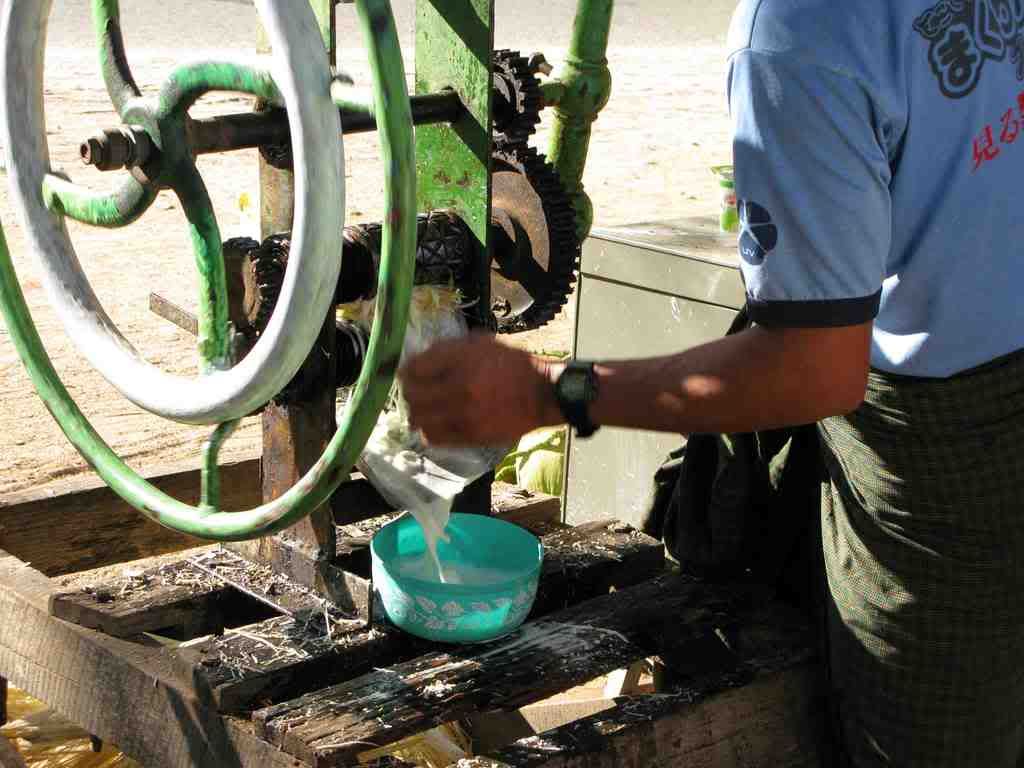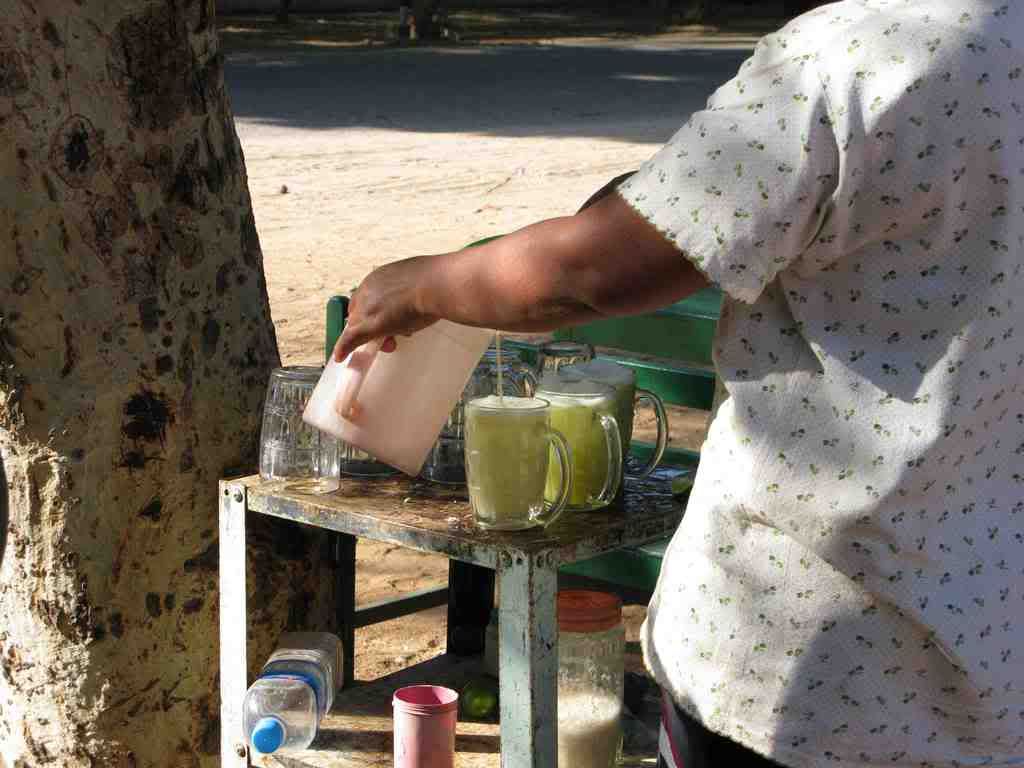This video, which was taken in the Yangon's city centre market, shows how - and where - the iceman prepares to make his deliveries. First, he saws the large blocks of ice into smaller pieces. Then, his helpers stack the smaller ice blocks, separating the stacks with sawdust to help insulate them and to prevent them from sticking to each other. He's now ready to undertake his daily deliveries to the local market stalls, or to any household or business on his list of customers.
The ice blocks, which are made from non-potable water, are used in numerous ways by the Myanmar people. Those who are lucky enough to have iceboxes will use a block of ice to keep perishable food cool.
Some vendors crush ice and add it to fruit juices to make a refreshing beverage.

One popular beverage in the Bagan region of Myanmar is lime-flavored sugar cane juice, squeezed fresh while you wait. We watched the process at a roadside refreshment stand.

The juicer's assistant takes a small block of ice in hand, crushes it by hitting it with a wooden stick, and puts the crushed ice into a glass mug.

In the meantime, the juicer grabs a handful of sugar cane stalks and proceeds to feed them into a hand-cranked crushing machine. He feeds the stalks through several times, in order to extract all of the juice. On the last run-through, he sandwiches a couple of wedges of fresh lime between the stalks.

The juice collects in a small bowl, which the assistant empties periodically into a pitcher.

Finally, the assistant pours the juice into the ice-filled mugs.

A side note about Myanmar attire. Most men and women wear a traditional "skirt" known as a longhi. This is a long piece of fabric (typically cotton for everyday wear) sewn into a tube. Men tie the tube in a large knot in front, whereas women tie or tuck it on the side. It's not unusual to see men undo and retie their longhi as they walk along the street.





No comments:
Post a Comment
Note: Only a member of this blog may post a comment.